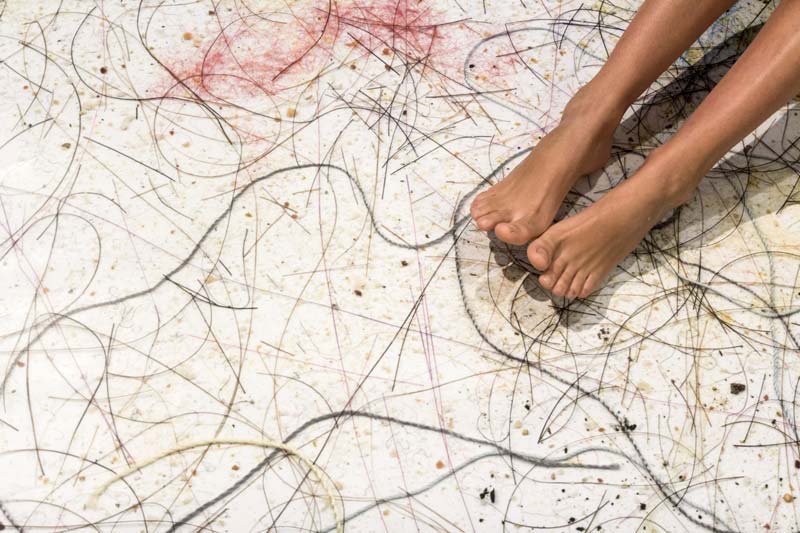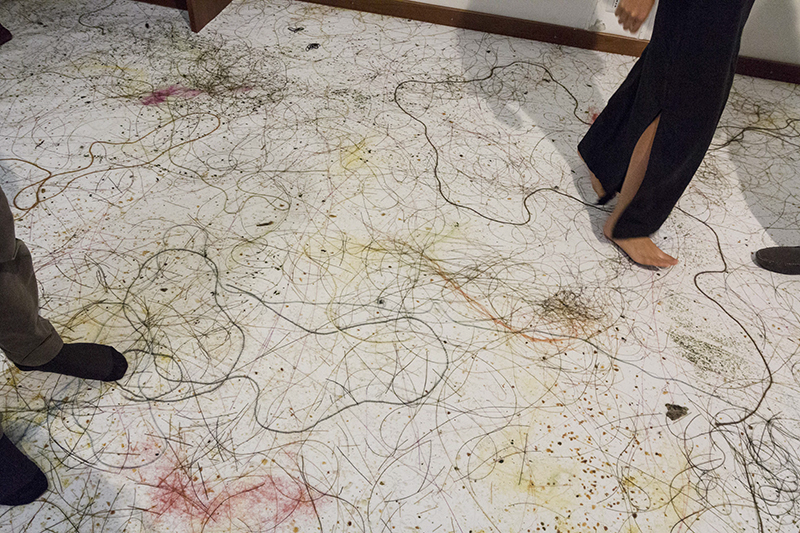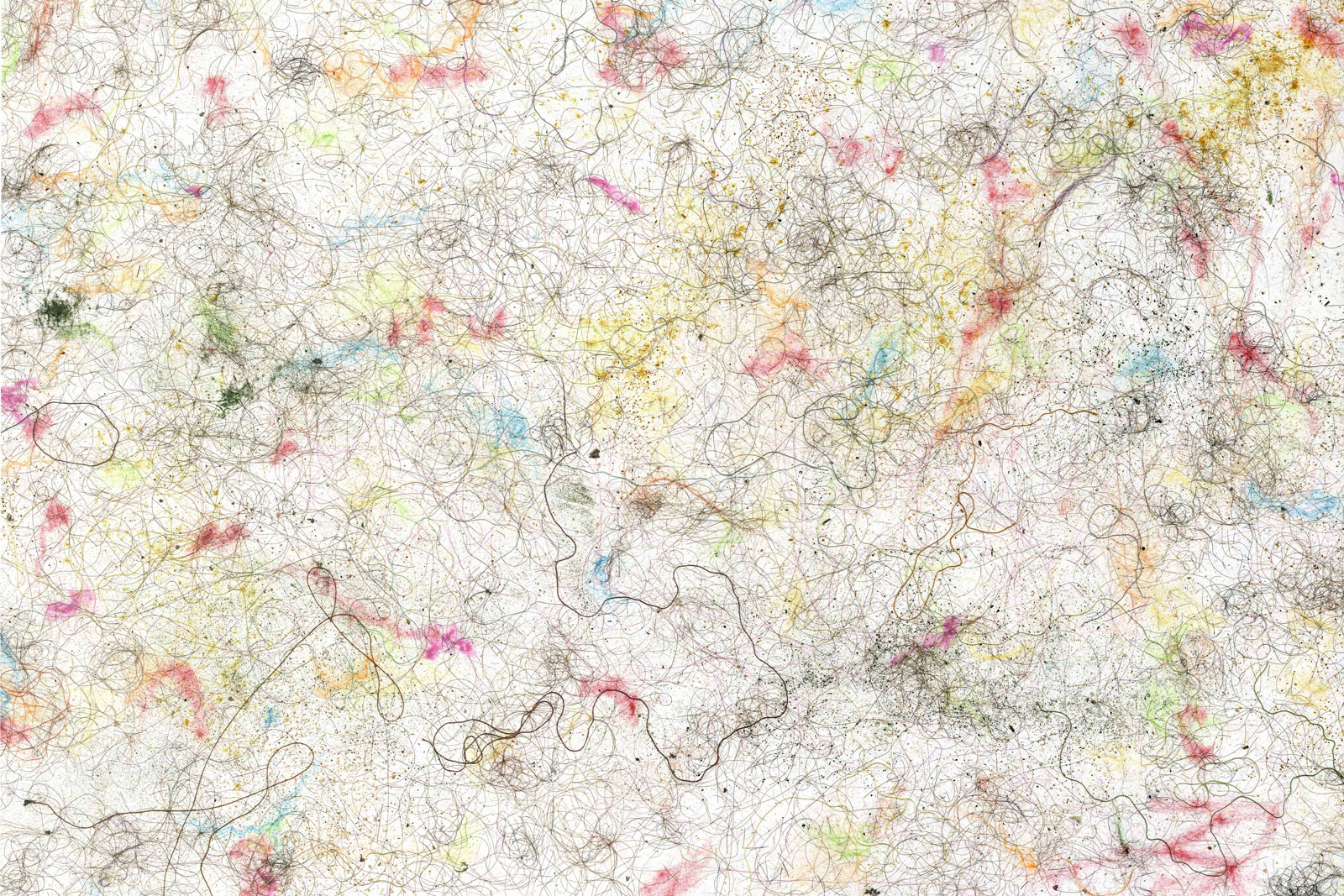Scorie Microcosmiche – Superficie Calpestabile
(Microcosmic Slag – Treadable Surface)
Installazione - Happening
Scorie Microcosmiche – Superficie Calpestabile
A space-time journey of existential nature, evoking a Freudian residue and its most recent elaborations, with Jacques Lacan at the forefront; a voyage beyond the boundaries of shame and reality, resonating as both a redemption of the Divine Marquis and an unprecedented reference to the tow concealed by his tailor beneath the armpits of Casanova’s summer jacket—an artifice that enabled his daring escape from the 'Leads' of Venice. A magnificent flight from reality, reminiscent of those staged by Piero Manzoni and, in the present case, enacted by Eleonora Gugliotta.
Rolando Bellini
Work exhibited at Piero Manzoni's former studio in Milan
Full article of the exhibition
Since the very beginning, the artist’s research methodology has relied on the technique of ready-made, extracting elements from their natural context and reintroducing them into an environment in a completely new way, creating a form of cognitive interference in the viewer.
In the project Microscopic Waste, the artist isolates a bodily element—one perceived in Western society as mere waste—and magnifies it exponentially, rendering it almost unrecognizable. Body hair and strands of hair are enlarged to a macroscopic scale and relocated onto the exhibition floor, compelling visitors to walk barefoot through an intimate and personal world linked to modesty, bodily hygiene, and embarrassment. Just as Gilbert & George enlarged their bodily fluids on canvas to provoke societal reflection, Eleonora Gugliotta magnifies hair to spark a dialogue on how cultural diversity generates opposing stereotypes. In the West, body hair is seen as an undesirable remnant, a source of inhibition; in the East, it becomes sacred when removed (as in Islamic tradition), or its complete absence signifies chastity, as in Buddhist monasticism. By repositioning this magnified bodily element, the artist also bestows upon it a new, iconoclastic meaning.
The tangled signs forming this vast field of hair resemble an informal painting, acquiring a dual cognitive dimension in which the biological nature of hair regains its meaning only in the small, original "tears" also displayed—like delicate, precious jewels—to be scrutinized through magnifying lenses. From macro to micro and back again, this is the ambivalent game the artist plays in reinventing an element that covers almost the entire human body yet evokes profound repulsion in the Western world, perhaps due to its deeply intimate connotation. And yet, the enlargement of these expanses of hair reveals mesmerizing textures, which have nothing in common with the collective perception of bodily waste but instead acquire an abstract and profoundly painterly quality.
Sasvati Santamaria

Drawn to unexplored surfaces, much like contemporary Armstrongs, we are compelled to place our bare feet on surfaces of ‘microcosmic residues.’ Walkable like carpets, these enlarged photographs feature as their sole subject what is usually cast out of sight and discarded from the body—what, in different cultures and societies, is rejected and condemned as something repugnant and impure. These tiny remnants, produced by or originating from the human body—such as “hairs,” “strands,” “lint,” “dust,” “crumbs,” and so on—are here transformed into artistic carpets, installations with a powerful spatial and environmental impact, microcosms to be investigated and explored, individual traces and organic memory of humanity. […]
And it is precisely the discovery of these parts of the body—considered ‘the dark side of the moon,’ areas long kept in shadow—that becomes the concept to be redefined, much like sexual identity was in the past. Placed under the ‘modest’ gaze of the viewer, these ‘microcosmic residues’ seek to dismantle ingrained ideas, taboos, and preconceptions, violently tearing through the veil that has always concealed the uncomfortable and embarrassing truths of our bodies, dissipating all forms of prying thoughts along with the imposed modesties of social and cultural structures.
Danilo Lo Piccolo

